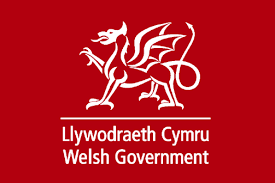The final 5% challenge – 7 pilot schemes deployed to bring superfast broadband to UK’s hardest-to-reach areas
The Department for Culture, Media and Sport today published their initial findings from the feasibility phase of 8 test pilots that were set up to explore alternative technologies and business cases to deploy superfast broadband to the hardest-to-reach areas. 7 of those pilots are now being taken forward to deployment.
Under current Government targets, superfast broadband will be available to 95% of UK premises by 2017. With the private sector unable to conventionally deploy this technology much beyond 75% of premises, the Government is using public funds to help bridge this gap. DCMS reported on Friday that nearly 2 million homes and businesses now had access to superfast broadband (download speeds of 24Mbps) thanks to its BDUK rollout – which is growing at a pace of 40 000 premises per week according to the Secretary of State, Sajid Javid.
In recent weeks, numerous Westminster debates on the challenges of providing basic and superfast broadband coverage to the “hardest-to-reach??? premises have taken place. Options to roll-out superfast broadband to the remaining 5% of UK premises (predominantly remote and rural areas) are being investigated by DCMS before public funding and target commitments are potentially made.
Over the past 6 months, feasibility studies were undertaken to assess the potential for commercial and technical viability as well as expected scalability of the 8 shortlisted projects. Wireless, satellite, and a mix of technologies (fibre, fixed wireless, sub-loop unbundling), a financial model (through social investment) and an operating model were tested in various parts of the country (representative of the hardest to reach parts of the UK). One model based around wireless aggregation was not taken forward after it was awarded a ‘not now’ finding based on the company involved flagging previously unforeseen commercial risks.
Interestingly, the report outlines where the final 5% are in terms of urban/rural splits. Broadly, they suggest that 20% are areas with a density of over 2000 premises per km2, 20% are in areas with between 500-2000 premises per km2 with 60% in areas with under 500 premises per km2.
The pilots, which themselves may bring increased connectivity to around 8000 premises, are now moving into their deployment stages with the first customers expected to be connected by the end of February this year. This phase is expected to run until March 2016 with DCMS pledging to provide periodic updates in the interim.
The BSG will continue to stay actively engaged on this issue.
The full summary report is available here:
https://www.gov.uk/government/publications/superfast-broadband-programme-phase-3





